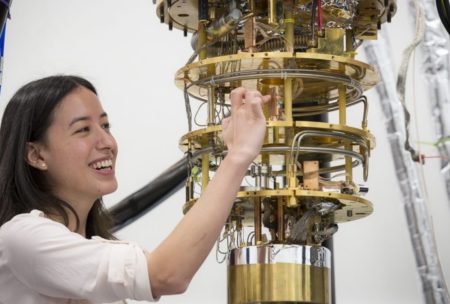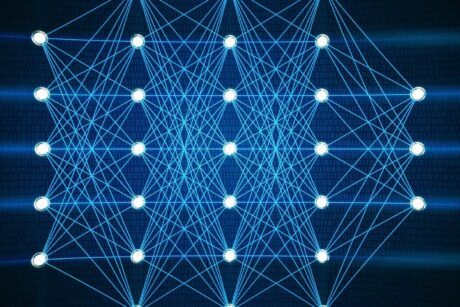Master Quantum Computing with IBM Qiskit: Calculate complex data in milliseconds. Unlock the future of computing today!
Read more.Instructor
I am a Post Graduate Masters Degree holder in Computer Science and Engineering with experience in Android/iOS Mobile and PHP/Python Web Developer Apps
Access all courses in our library for only $9/month with All Access Pass
Get Started with All Access PassBuy Only This CourseAbout This Course
Who this course is for:
- Beginners looking to embark on a journey into Practical Quantum Computing Concepts
What you’ll learn:
- Gain a comprehensive understanding of General Quantum Computing through IBM Qiskit Documentation
Requirements:
- Basic computer knowledge and a passion for Quantum Computing are the only prerequisites
Are you intrigued by the world of quantum computing, eager to grasp practical concepts without delving into complex mathematics? Welcome to “The Beginner’s Guide to Practical Quantum Computing with IBM Qiskit.” This course is tailor-made for beginners who aspire to explore the exciting realm of quantum computing without the need for extensive mathematical background.
NOTE: In classical computers a programmer can simply WRITE HIGH LEVEL CODE AND RUN it. But for Quantum Computers we have to DESIGN CIRCUITS for performing specific tasks.
Our everyday computing relies on classical bits, which represent binary digits as either 1 or 0, akin to the two sides of a coin—heads and tails. However, in the realm of quantum computing, we transcend these binary limitations.
In quantum computing, we harness the peculiar properties of subatomic particles, such as electrons, to perform computations. Instead of the binary 1 and 0, quantum bits or “qubits” utilize the spin positions ‘up’ and ‘down’ of electrons. Remarkably, unlike classical bits, qubits can exist in both states simultaneously, analogous to a coin in constant motion—simultaneously heads and tails.
As the number of qubits increases, the computational speed scales exponentially compared to classical computers. Tasks like data analytics and artificial intelligence, which demand immense parallel processing, can be executed in mere milliseconds, a feat that currently takes considerable time.
While quantum computers won’t replace our everyday devices, they offer solutions to the bottlenecks faced by traditional computers in data processing.
This course serves as an ideal starting point for quantum computing enthusiasts, providing an accessible introduction to the subject. We’ve made every effort to steer clear of complex mathematics and formulas, making quantum computing comprehensible to beginners.
We adhere closely to the IBM Qiskit documentation and textbook, utilizing illustrations and examples primarily from the IBM Qiskit Documentation website, which you can refer to for further learning.
Quantum computers possess the potential to drive breakthroughs in various fields, including science, medicine, machine learning, material science, and finance, ultimately advancing human civilization. Their incredible power remains largely untapped, with no perfect quantum algorithms developed as of yet. Both the hardware and software are still in the developmental stage, presenting substantial opportunities for future quantum computing professionals.
So, that concludes our course introduction. We look forward to having you join us on this exciting quantum computing journey. Happy learning, and may you have a fantastic time exploring this fascinating world.
Our Promise to You
By the end of this course, you will have learned Quantum Computing concepts.
10 Day Money Back Guarantee. If you are unsatisfied for any reason, simply contact us and we’ll give you a full refund. No questions asked.
Get started today and learn more about quantum computing. Take a look at my other courses by visiting my Instructor Profile page.
Course Curriculum
| Section 1 - Course Introduction And Table Of Contents | |||
| Course Introduction And Table Of Contents | 00:00:00 | ||
| Section 2 - Introduction To Quantum Mechanics | |||
| Introduction To Quantum Mechanics – Part 1 | 00:00:00 | ||
| Introduction To Quantum Mechanics – Part 2 | 00:00:00 | ||
| Section 3 - Classical Bit vs Quantum Qubit | |||
| Classical Bit vs Quantum Qubit – Part 1 | 00:00:00 | ||
| Classical Bit vs Quantum Qubit – Part 2 | 00:00:00 | ||
| Classical Bit vs Quantum Qubit – Part 3 | 00:00:00 | ||
| Classical Bit vs Quantum Qubit – Part 4 | 00:00:00 | ||
| Section 4 - Creating, Retaining And Reading Out Qubits | |||
| Creating, Retaining And Reading Out Qubits – Part 1 | 00:00:00 | ||
| Creating, Retaining And Reading Out Qubits – Part 2 | 00:00:00 | ||
| Section 5 - Vector And Matrix Quantum States | |||
| Vector And Matrix Quantum States | 00:00:00 | ||
| Section 6 - Classic Logic Gates Overview | |||
| Classic Logic Gates Overview | 00:00:00 | ||
| Section 7 - Popular Quantum Frameworks | |||
| Popular Quantum Frameworks | 00:00:00 | ||
| Section 8 - Installing Anaconda Python Distribution | |||
| Installing Anaconda Python Distribution | 00:00:00 | ||
| Section 9 - Installing And Testing Qiskit | |||
| Installing And Testing Qiskit | 00:00:00 | ||
| Section 10 - Pauli X-gate In Qiskit | |||
| Pauli X-gate In Qiskit – Part 1 | 00:00:00 | ||
| Pauli X-gate In Qiskit – Part 2 | 00:00:00 | ||
| Pauli X-gate Input And Output Customizations | 00:00:00 | ||
| Pauli X-gate In Real IBM Quantum Computer | 00:00:00 | ||
| Pauli Matrices As State Vectors | 00:00:00 | ||
| Section 11 - Pauli Y-gate Operations | |||
| Pauli Y-gate – Part 1 | 00:00:00 | ||
| Pauli Y-gate – Part 2 | 00:00:00 | ||
| Pauli Y-gate – Part 3 – In Real Quantum Computer | 00:00:00 | ||
| Seciton 12 - Pauli Z-gate | |||
| Pauli Z-gate | 00:00:00 | ||
| Section 13 - Eigen Vectors Of XYZ gates | |||
| Eigen Vectors Of XYZ gates | 00:00:00 | ||
| Section 14 - Hadamard Gate | |||
| Hadamard Gate Introduction | 00:00:00 | ||
| Hadamard Gate In Qiskit | 00:00:00 | ||
| Hadamard Gate Exercises – Part 1 | 00:00:00 | ||
| Hadamard Gate Exercises – Part 2 – X With H And Z | 00:00:00 | ||
| Hadamard Gate Exercises – Part 3 – Superposition Collapse | 00:00:00 | ||
| Section 15 - H gate In Real Quantum Computer | |||
| H gate in Real Quantum Computer | 00:00:00 | ||
| Section 16 - R phi Gate | |||
| R phi Gate | 00:00:00 | ||
| Section 17 - S And T Gates | |||
| S And T Gates | 00:00:00 | ||
| Section 18 - U And I Gates | |||
| U And I Gates | 00:00:00 | ||
| Section 19 - Multi Qubit States | |||
| Multi Qubit States Introduction | 00:00:00 | ||
| Representing Multi Qubit States | 00:00:00 | ||
| Multi Qubit Circuit Using Single Qubit Gates – Sample Circuit 1 | 00:00:00 | ||
| Multi Qubit Circuit Using Single Qubit Gates – Sample Circuit 2 | 00:00:00 | ||
| Section 20 - CNOT Gate | |||
| CNOT Gate With Classical Qubits | 00:00:00 | ||
| CNOT Gate With Control Qubit Superposition | 00:00:00 | ||
| CNOT Gate With Control Qubit Superposition – In Real Quantum Computer | 00:00:00 | ||
| CNOT Gate With Both Qubit Superposition | 00:00:00 | ||
| CNOT Gate With Both Qubit Superposition Target X | 00:00:00 | ||
| CNOT Circuit Identities – Part 1 | 00:00:00 | ||
| CNOT Circuit Identities – Part 2 | 00:00:00 | ||
| Section 21 - CZ Circuit Identity | |||
| CZ Circuit Identity – Part 1 | 00:00:00 | ||
| CZ Circuit Identity – Part 2 | 00:00:00 | ||
| Section 22 - CY Circuit Identity | |||
| CY Circuit Identity | 00:00:00 | ||
| Section 23 - SWAP Circuit Identity | |||
| SWAP Circuit Identity | 00:00:00 | ||
| Section 24 - Toffoli Gate | |||
| Toffoli Gate | 00:00:00 | ||
| Toffoli Circuit Identity | 00:00:00 | ||
| Section 25 - DJ Algorithm | |||
| DJ Problem Overview | 00:00:00 | ||
| DJ Algorithm Design | 00:00:00 | ||
| DJ Algorithm Implementation – Part 1 | 00:00:00 | ||
| DJ Algorithm Implementation – Part 2 | 00:00:00 | ||
| DJ Algorithm Implementation – Part 3 | 00:00:00 | ||
| Section 26 - Quantum Cryptography : Quantum Key Distribution | |||
| Quantum Key Distribution – RSA Concepts | 00:00:00 | ||
| Quantum Key Distribution – Concepts | 00:00:00 | ||
| Section 27 - Quantum Teleportation Theory | |||
| Quantum Teleportation Theory | 00:00:00 | ||
| Section 28 - Further Learning And Resources | |||
| Further Learning And Resources | 00:00:00 | ||
| Source Code And Files | 00:00:00 | ||




